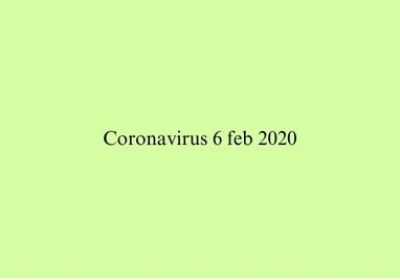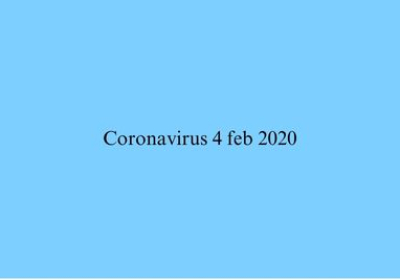
Avian influenza A (H5)-related human illness in Chile
Avian influenza A (H5)-related human illness in Chile
- By --
- Saturday, 27 May, 2023
Avian influenza A (H5)-related human illness in Chile- The virus that causes avian influenza, sometimes referred to as "bird flu," is a member of the Orthomyxoviridae family and mostly affects birds.
- It can be categorized as having a high or low pathogenicity according on its subtype, and infected birds will exhibit various symptoms. A minor infection brought on by the Low Pathogenic Avian Influenza Virus (LPAIV) might go unrecognized or without any symptoms. High mortality rates in many bird species are caused by the Highly Pathogenic Avian Influenza Virus (HPAIV), which is caused by subtypes (H5 and H7) of type A of the influenza virus.
- The majority of influenza viruses that are present in birds are not zoonotic. Yet, certain HPAI strains are capable of infecting people, endangering the general public's health. Direct or indirect contact with diseased animals or feces- contaminated surrounding and surface is the greatest risk factor.
Transmission of infection
Wild birds that migrate are the main vectors for the virus to reach a region. Direct or indirect contact with diseased animals or with settings and surfaces that have been polluted with excrement is the greatest risk factor for the transfer of the disease from birds to people. Risk factors may also include plucking, handling contaminated carcasses, and cooking chicken, particularly in home settings.
Symptoms of infection
Human cases of avian influenza are typically brought on by direct or indirect contact with infected live or dead poultry or contaminated environments. Acute respiratory distress syndrome (ARDS) fever, cough, muscle aches, headache, pneumonia (difficulty breathing), severe pneumonia, shock, and even death are all possible symptoms of avian influenza in humans.
Human avian influenza A (H5) symptoms might include fever, coughing, sore throat, headache, muscular pains, and shortness of breath as well as pneumonia and respiratory failure. Malaise, diarrhoea, nausea, vomiting, or seizures are possible further
Symptoms
The presence of fever may not always be the case, it should be noted.
Most avian influenza infections in humans are brought on by direct or indirect contact with infected living or dead poultry, contaminated surroundings, or both.
Fact sheet of this infection
The rise of dangerous infectious illnesses over the past 20 years and recent zoonotic disease outbreaks have increased public awareness of the fact that diseases may spread between different species. Sixty-one percent of the 1,415 identified human pathogens are zoonotic. Many developing and reemerging cattle disease epidemics have cost the globe an estimated $80 billion since the mid-1990s, among other things. The increased contact of people and their domesticated animals with wildlife, especially as a result of habitat invasion, is a significant contributor to the formation of novel zoonoses. Other broad influences include environmental changes, the globalisation of food production and trade, microbiological adaptation, and human behavioural traits.
Infectious illnesses are able to spread quickly beyond their initial focus because to increased international trade, travel, and product exchanges. Estimating the impact of zoonoses on human health is challenging, especially given the global underreporting of endemic illnesses. Yet, it cannot be denied that emergent zoonoses have an impact on public health, both directly (in terms of morbidity and death) and indirectly (in terms of their influence on public health practise and organisation).
PAHO Response
The Ministerial Level Inter-American Conference on Health and Agriculture, which is organised by PAHO, has a long history of cooperation on health and agriculture (RIMSA). Every two years, PAHO discusses agreements with agricultural groups like the IICA and cooperative efforts with national veterinary agencies to eradicate foot-and-mouth disease, zoonoses, and ensure the safety of food.
In particular, the RIMSA meeting, which PAHO has been hosting for more than 20 years, offers a special regional platform where the highest ranking officials from the agriculture and health sectors are joined by leaders from the corporate sector to debate topics of shared interest.
Guidelines for each stage of the possible pandemic are included in PAHO's strategy and operational plan for reacting to it. It specifically contains the required elements of an evaluation of the nations' capabilities to address the danger in the pre-pandemic period. All industries involved in assessing readiness for a potential pandemic among humans and animals, health services, zoonosis, agriculture, disaster, civil defence, and communication should take part in this evaluation.
States of this infections -
An epidemiological examination of a Chilean man's H5 avian influenza illness has found that environmental exposure is most likely the source of infection, according to a World Health Organization (WHO) update. The second individual in South America to develop this kind of sickness is this man, who is from the northern Chilean district of Antofagasta.
The man's symptoms started on March 13 and there were no underlying medical conditions. He was brought to the critical care unit on March 22 after his health deteriorated and he was hospitalised. An A/H5 virus test on a bronchoalveolar swab was positive.
The WHO reported that between December 22, and February 23, highly pathogenic avian influenza was found in wild birds (pelicans and penguins), as well as sea animals (sea lions). Scientists hypothesised that the individual could have come into contact with the virus in neighbourhoods close to his home where ill birds or animals were discovered.
Market for poultry in Chile ( epidemiology)
In 2021, Chile produced 71,614 tonnes of turkey and 675,162 tonnes of chicken meat. According to estimates, the nation's exports of chicken meat will have climbed by 11% to 214,000 mt and by 28% in value in 2022. Exports of turkey meat may have climbed by 25% to 30,000 tonnes.
Ecuador has a human case of avian influenza.
A 9-year-old girl in Bolivar province has been identified as the first human case of avian influenza, according to Ecuador's Ministry of Health. A month after the nation declared an animal health emergency, this is the first human infection case in South America and is an uncommon occurrence.
Reuters reports that the human illness brought on by avian influenza viruses can have moderate to severe symptoms, including potentially fatal ones.
Ecuador issued an epidemiological alert in December after announcing a health emergency at the end of November. At Cotopaxi and Bolvar, where many birds were killed to stop the spread of the disease, they recorded cases.
Since last year, avian flu has wiped out poultry flocks in Europe, Asia, and North America, including the US, which reported the first human case in April.
No instances have been recorded in Argentina, Brazil, Paraguay, or Uruguay as of yet.
To curb the disease's spread, hundreds of millions of commercial birds all through the world were killed, and millions more wild birds also perished.
According to the CDC report According to the paper, HPAI A(H5N1) viruses that are now circulating in birds and poultry, with spillover to mammals, and those that have infected humans, "do not yet have the potential to easily connect to receptors that predominate in the human upper respiratory tract." As a result, there is now little danger to the general public from HPAI A(H5N1) viruses. Nonetheless, continual preparedness measures and extensive surveillance of these viruses in wild birds, poultry, animals, and people throughout the world are necessary to assess the danger to the public health.In addition to performing surveillance among Americans who have had relevant exposures and planning for the likelihood that H5N1 viruses acquire the capacity to transmit to and amongst individuals more readily, the CDC is aggressively addressing the H5 issue both globally and domestically.
Conclusion
The influenza virus known as avian influenza A (H5) primarily infects birds but can also infect humans. Human cases of Avian Influenza A (H5) present with symptoms that are comparable to those of other influenza. Contact with infected birds or their secretions, such as saliva or droppings, can cause the virus to transmit to people. According to the illness's severity, avian influenza A (H5) in humans is treated differently. The best defence against human infection with avian influenza A is prevention (H5)
Sources
https://www.refersms.com/human-infection-caused-by-avian-influenza-a-h5-symptoms-causes-and-treatments/
https://www.who.int/emergencies/disease-outbreak-news/item/2023-DON453
https://www.paho.org/en/topics/avian-influenza
https://www.poultrymed.com/Poultrymed/Templates/showpage.asp?DBID=1&LNGID=1&TMID=178&FID=5008&PID=0&IID=83324
https://www.poultryworld.net/health-nutrition/health/bird-flu-detected-in-chile-and-human-case-reported-in-equador/
https://www.cdc.gov/flu/avianflu/spotlights/2022-2023/chile-first-case-h5n1.htm
https://www.refersms.com/human-infection-caused-by-avian-influenza-a-h5-symptoms-causes-and-treatments/





